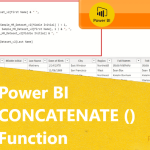Microsoft Exchange Server, an email, calendaring, and address book system, plays an essential role in many organizations’ data protection strategies due to its comprehensive security features.
The system offers sophisticated functionalities beyond essential email communication, with built-in components designed to secure, protect, and manage digital assets.
Microsoft Exchange Server’s security provisions encompass multi-tiered features, addressing various risk areas and potential threats within an organization’s digital communication infrastructure.
These features range from measures to secure data in transit and at rest, control access to data, protect against data loss and ensure email authenticity to mechanisms for detecting and mitigating security threats.
It’s important to understand that the Exchange Server’s security and data protection features are designed with end-users and system administrators in mind.
What is Exchange Server?
Microsoft Exchange Server is a mail server and calendaring server developed by Microsoft. It operates exclusively on Windows Server operating systems. The server provides email, scheduling, and tools for custom collaboration and messaging service applications.
It incorporates features for secure mail transport, robust data storage, and simplified administration processes. Its central role in managing communications makes it a key component within business IT infrastructures.

Benefits of Exchange Server
Microsoft Exchange Server is a viral and powerful email, calendar, contact management, and collaboration platform many businesses and organizations worldwide use.
The platform is designed to help businesses manage communications and improve productivity while maintaining high levels of security and compliance. Here are some key benefits of using Exchange Server:
| Benefit | Description |
| Centralized Emails | Exchange Server centralizes your organization’s emails into one system, simplifying the management and backup of emails. |
| Robust Security Features | Exchange Server includes built-in defenses against spam and phishing threats and supporting encryption to protect sensitive data. |
| Accessibility | Access your mailbox anywhere, anytime, on any device, via the Outlook app or web browser with Exchange Server’s webmail service, Outlook on the Web. |
| Calendar and Contact Sharing | Exchange Server enables sharing of calendars and contacts across your organization, supporting improved collaboration and scheduling. |
| Data Loss Prevention | Features like automatic backup, recovery mechanisms, and retention policies help prevent data loss, ensuring that your business-critical data is always available. |
| Scalability | Exchange Server can be scaled up or down depending on your organization’s needs, making it suitable for small and large businesses. |
| Integration | Exchange Server integrates well with other Microsoft products such as SharePoint and Office Suite, allowing seamless communication and collaboration across tools. |
| Compliance Features | Tools for eDiscovery, retention policies, and auditing functionalities help organizations to comply with legal, regulatory, and organizational data management demands. |
How does Exchange Server work?
Microsoft Exchange Server is a robust mail and calendar server solution primarily utilized by businesses, corporations, and other organizations to manage and streamline their communication needs effectively.
How it Works
- Email Hosting: The primary function of the Exchange Server is hosting email. Email hosting with Exchange involves storing email messages on the server and serving them to clients when they are requested.
- Client Access: Clients can access their email messages, contacts, tasks, and calendar appointments through various methods such as Outlook, Outlook on the web (formerly known as Outlook Web App), or mobile devices. This is achieved via different protocols such as POP, IMAP, or, more commonly, MAPI over HTTP, which provides improvements in stability and connection resilience.
- Data Storage: Emails, contacts, calendars, tasks, and other data are stored in a database managed by Exchange Server. Each user’s data is correlated with a mailbox on the server.
- Collaboration Features: Exchange Server includes additional collaboration features such as public folders, shared calendars, shared mailboxes, and resource booking for rooms and equipment.
- Security and Compliance: Exchange Server provides built-in protective technologies to keep your business moving, reduce spam and viruses, enable confidential communications, and help your company comply.

Why Businesses Use Exchange Server
- Reliability: Exchange Server is a product of Microsoft, a trusted name in the corporate world. Its robustness and reliability make it an excellent choice for businesses.
- Scalability: Whether your organization is small, medium, or large, Exchange Server can scale to meet your needs.
- Unified Communications: Exchange Server unifies email, calendar, contacts, and tasks. Users can manage all these aspects through one platform, enhancing efficiency.
- Collaboration: It provides powerful collaboration tools, like shared mailboxes and calendars, making it easier for teams to work together.
- Security: With built-in security measures and compliance protocols, Exchange Server helps organizations protect sensitive data and meet industry-specific requirements.
- Integration: Exchange Server integrates seamlessly with other Microsoft products, like SharePoint and Skype for Business, making it a cornerstone of the Microsoft ecosystem in many businesses.
How to set up Exchange Server?
Setting up an Exchange Server is a multi-step process that involves several technical tasks. Before proceeding, it is crucial to ensure that your infrastructure meets the system requirements of the Exchange Server.
Here’s a basic guide on how to set up Exchange Server:
Step 1: Prepare Infrastructure
Make sure that your infrastructure is ready. This includes verifying that your network, storage, and servers meet the system requirements. It’s also important to ensure a valid Active Directory environment, as Exchange relies heavily on Active Directory.
Step 2: Install Windows Server
Install Windows Server on the machines running Exchange. Exchange Server 2019 is supported on Windows Server 2019.
Step 3: Install Exchange Prerequisites
Before the installation of Exchange Server, some Windows components must be installed. These include .NET Framework, Visual C++ Redistributable Package for Visual Studio, and Unified Communications Managed API (UCMA). It’s recommended to install the latest Windows updates as well.
Step 4: Active Directory Preparation
Exchange Server needs to extend the Active Directory schema, prepare the Active Directory, and prepare the domains for Exchange. This can be done using Exchange ISO and running setup with the appropriate switches in PowerShell.
Step 5: Install Exchange Server
Now that the prerequisites are installed and the Active Directory is ready, it’s time to install Exchange Server. This is done using the Exchange ISO and following the setup wizard or an unattended setup with PowerShell.
Step 6: Post-installation tasks
After the installation, you’ll need to configure Exchange for your environment. This might include creating mailboxes, configuring virtual directories, setting up certificate-based services, configuring mail flow, and more.
Step 7: Test
Finally, thoroughly test the system to ensure everything works correctly. This might include sending test emails, checking whether you can access mailboxes, whether mail flow works, etc.
Exchange Online & Cloud Computing
Exchange Online provides all the capabilities of an on-premises Microsoft Exchange Server, including email, calendars, tasks, and contacts, but with the added benefit of being hosted in the cloud. Cloud computing is the on-demand delivery of IT resources over the Internet with pay-as-you-go pricing. Instead of buying, owning, and maintaining physical data centers and servers, companies can access technology services, like computing power, storage, and databases.
How Does Cloud Computing Work with Exchange?
Cloud computing forms the backbone of Exchange Online, providing the resources and infrastructure needed for its operations. As such, businesses do not need to worry about maintaining on-premises servers or hardware.
- They can enjoy reliable and efficient access to their data from any location, at any time, and from any internet-enabled device.
- In the second layer of its operation, Exchange Online benefits significantly from the inherent features of cloud computing. Scalability is a prime example: cloud resources can be dynamically allocated or deallocated according to a company’s needs, allowing Exchange Online to flexibly scale the number of mailboxes or storage space a company uses.
- Equally important is the security and compliance measures offered by Microsoft’s cloud, which includes encryption, threat detection, multi-factor authentication, data loss prevention, and regulatory compliance tools.
- The cloud facilitates automatic updates and redundancy measures, ensuring users always access the most current and secure version of Exchange Online while also providing a robust disaster recovery mechanism.

Advantages of Using Exchange Online over On-Premises Software
As a cloud-based solution, Exchange Online minimizes the need for physical server hardware and the associated overheads of maintenance, updates, and scaling. Its subscription-based model also allows for predictable budgeting and financial planning.
| Advantage | Exchange Online | On-Premises Software |
| Cost | Lower initial cost because it’s subscription-based, with predictable monthly costs. No need for server hardware, power, or maintenance costs. | Higher initial cost due to server hardware, licenses, and infrastructure investment. It also includes ongoing costs for maintenance, upgrades, and electricity. |
| Scalability | Highly scalable. Businesses can easily increase or decrease mailboxes or storage capacity based on need. | Limited by server capacity. Scaling up usually requires significant additional investment in hardware. |
| Maintenance | Microsoft handles all maintenance, including updates, patches, and security. | Businesses need to handle all maintenance, including updates, patches, and ensuring security, which can be resource-intensive. |
| Accessibility | Accessible from anywhere, anytime, and on any device with an internet connection. | Access is generally limited to within the organization’s network unless additional configurations and investments are made for remote access. |
| Disaster Recovery | Built-in redundancy and backups across multiple geographically dispersed data centers. | Businesses must set up and manage their disaster recovery plan, which can be complex and expensive. |
| Compliance & Security | Robust security measures, including encryption, threat detection, and multi-factor authentication. Microsoft provides tools for data loss prevention, eDiscovery, and compliance with regulations like GDPR. | Security and compliance are entirely the responsibility of the organization. This includes applying patches, monitoring threats, and ensuring data compliance, which can be complex and resource-intensive. |
| Updates | Automatic updates ensure users always have the most current and secure version. | Manual handling of updates and patches by IT administrators, which can be time-consuming and prone to error. |
Email Clients & Mobile Devices Connected to an Exchange Server
Various email clients and mobile devices can be connected to an Exchange server, allowing users to access their emails, calendars, contacts, and tasks anytime, anywhere.
- Email Clients: Numerous email clients can be configured to sync with an Exchange server.
Among the most popular are:
- Microsoft Outlook: Often the preferred choice due to its comprehensive integration with Exchange’s features, Outlook supports not only email but also calendars, contacts, tasks, and even advanced features like shared mailboxes and public folders.
- Apple Mail: This default mail client for macOS can be configured to connect with an Exchange server, providing access to email, contacts, and calendars.
- Mozilla Thunderbird: Though it may require additional configuration or add-ons to fully support Exchange, Thunderbird is a popular open-source email client many users prefer for its customization capabilities.
- Mobile Devices: With the advent of smartphones and tablets, accessing your Exchange account on the go has become crucial.
Here’s how:
- iOS Devices: Apple’s iPhone and iPad have built-in support for Exchange accounts. Users can add their Exchange accounts in the settings, providing access to email, contacts, and calendars.
- Android Devices: Android devices typically support Exchange accounts as well. The exact steps to add an account can vary depending on the manufacturer and Android version. Still, generally, users can add their Exchange accounts via the settings of their email app.
- Windows Mobile Devices: Though less common, Windows-based mobile devices can connect to Exchange servers, with support integrated into the OS and its mail application.
Benefits of Partnering with EPC Group for Exchange Server Services
Partnering with us for Exchange Server Services presents several benefits for your business. With more than two decades of experience, we have developed a deep understanding of Microsoft technologies, including Exchange Server. We offer expert consultation, migration, and management services to help you seamlessly transition to Exchange Online or optimize your existing setup.
With our high level of expertise, they can help you leverage Exchange Server’s features to the fullest, ensuring efficient communication, better collaboration, and enhanced productivity. Take your business communication to the next level with EPC Group’s Exchange Server Services. Our team of certified professionals is always ready to assist you with reliable and responsive support.
Whether you’re looking to migrate to Exchange Online, need assistance with server management, or require a customized solution, EPC Group is the trusted partner you can count on. Contact us today to take the first step towards a more effective and secure communication environment. Let them guide you in achieving your business goals with Exchange Server.










